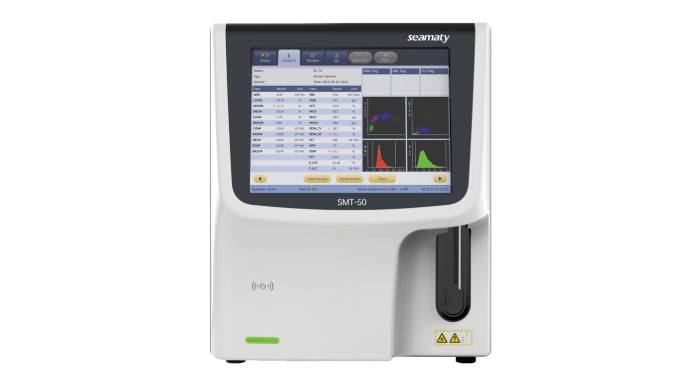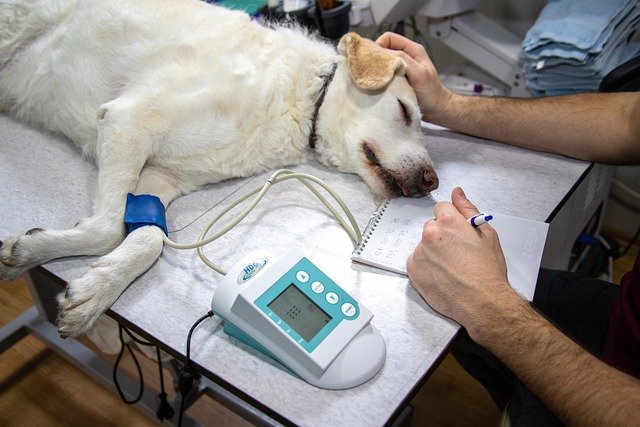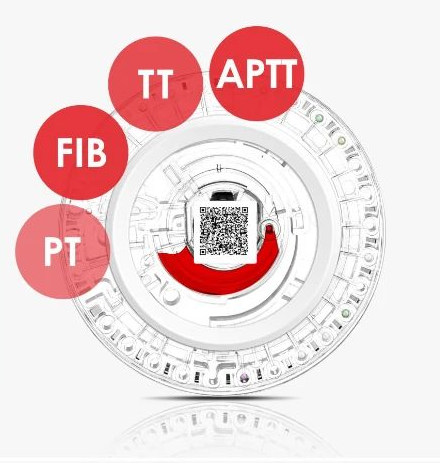Hematology Analyzer, also known as Blood Cell Analyzer or Blood Cell Counter, is mainly used for testing blood specimens. This instrument can qualitatively and quantitatively analyze the blood components and provide relevant information.
History of hematology analyzer
Since the early 1950s, when Mr. Coulter invented the patent for particle counting technology and manufactured the first hematology analyzer for clinical use,
hematology analyzers have been in development for more than 60 years. A hematology analyzer is essentially an instrument that analyzes the number and heterogeneity of blood cells in a given volume.
The original blood counters were only able to count red blood cells (RED) and white blood cells (WBC). Later, several parameters such as hemoglobin (HBG), platelets (PLT), red blood cell pressure (HCT), and mean red blood cell volume (MCV) were added.
After the development of Hematology Analyzer, many more parameters have been added for analysis and calculation. Such as Red Blood Cell Volume Distribution Width (RDW), Mean Platelet Volume (MPV), Platelet Volume Distribution Width (PDW), Platelet Pressure Volume (PCT), Large Platelet Ratio, Leukocyte Triplet, Leukocyte Quintuplet, Hemoglobin Concentration Distribution Width, Abnormal Lymphocyte Indication, Infantile Cell Indication, etc. Various parameters and features are constantly being added to some brands of instruments.

Hematology analyzer principle
To commemorate Mr. Coulter's contribution to hematology analyzers, the coulter principle was named the coulter principle, or the electrical impedance principle.
This principle has become the most classic principle in blood cell counting and analysis. The basic meaning of the coulter principle is: a micro-pore is placed in the liquid to be measured, and electrodes of a certain voltage are added at each end of the micro-pore. When the particles in the liquid pass through the micropore, the resistance between the electrodes will produce an instantaneous change. As a result, an electrical pulse is generated. The number of particles can be obtained by counting this electrical pulse. The size of the pulse amplitude indicates the size of the particle volume. By selecting the electrons of the size of the pulses generated by each cell, the different types of cells can be distinguished. By adding a certain amount of negative pressure to the liquid, the liquid passing through the micropores can be made to flow.
With the application of various high-tech technologies such as electronics, flow cytometry, laser technology, electronic computer technology and new fluorescent chemicals in clinical testing. This has taken the hematology analyzer to a whole new level in terms of automation, advanced features and perfect design.
Hematology analyzers are no longer limited to performing routine blood cell analysis. Many additional features have been added to this instrument. For example, the ability to count and analyze reticulocytes (RET) has been added. Some instruments have additionally added naive cell analysis and nucleated red blood cell analysis. Some hematology analyzers even provide indication of certain parasites in blood cells. Some instruments even incorporate some of the functions of flow cytometry into the hematology analyzer. The results of certain lymphocyte subpopulations can be obtained when performing routine blood cell analysis.



